NSYSU held the Pacific Blue Carbon Summit, ambassadors from six countries gathered to discuss carbon sink transaction
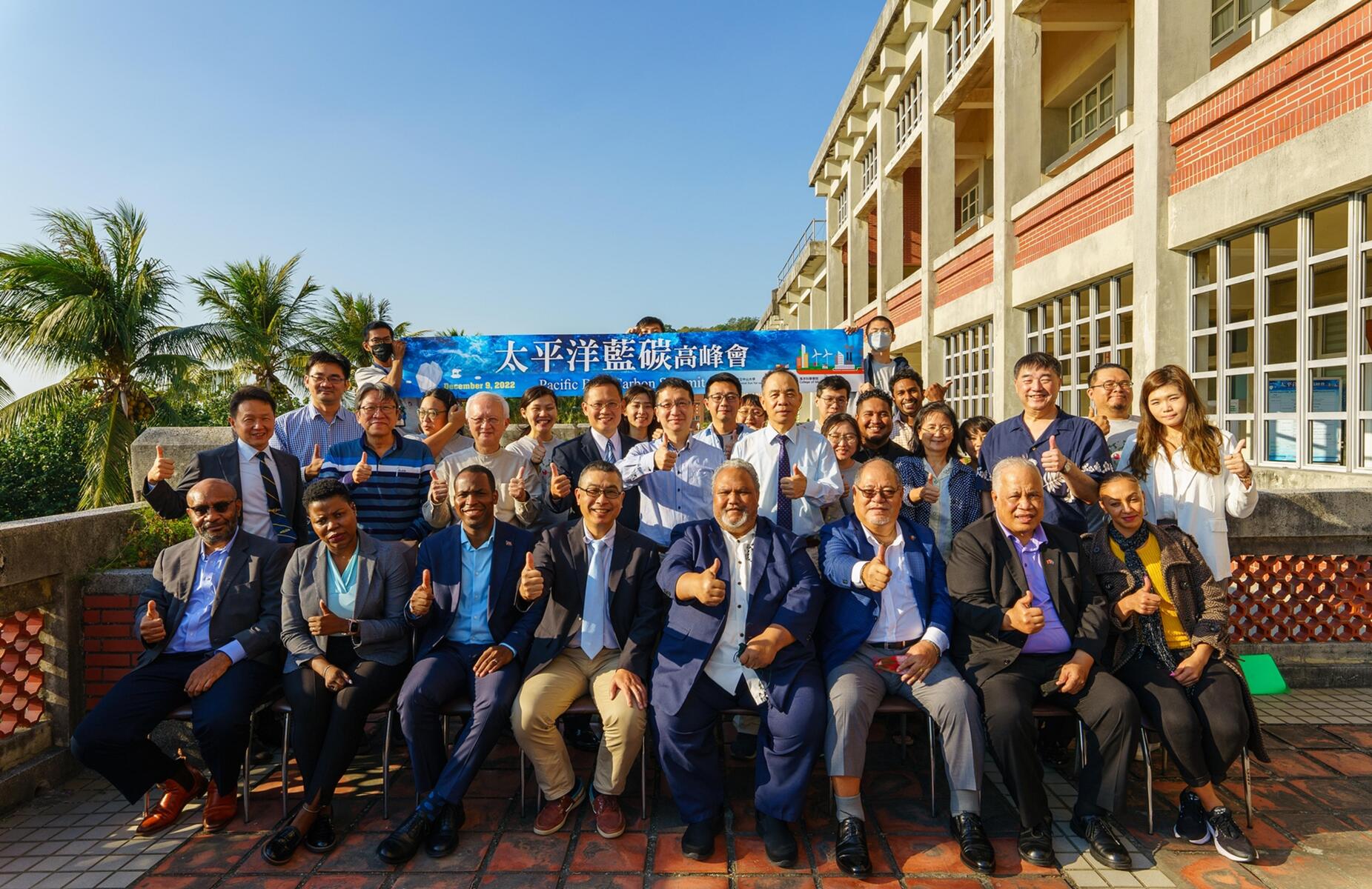
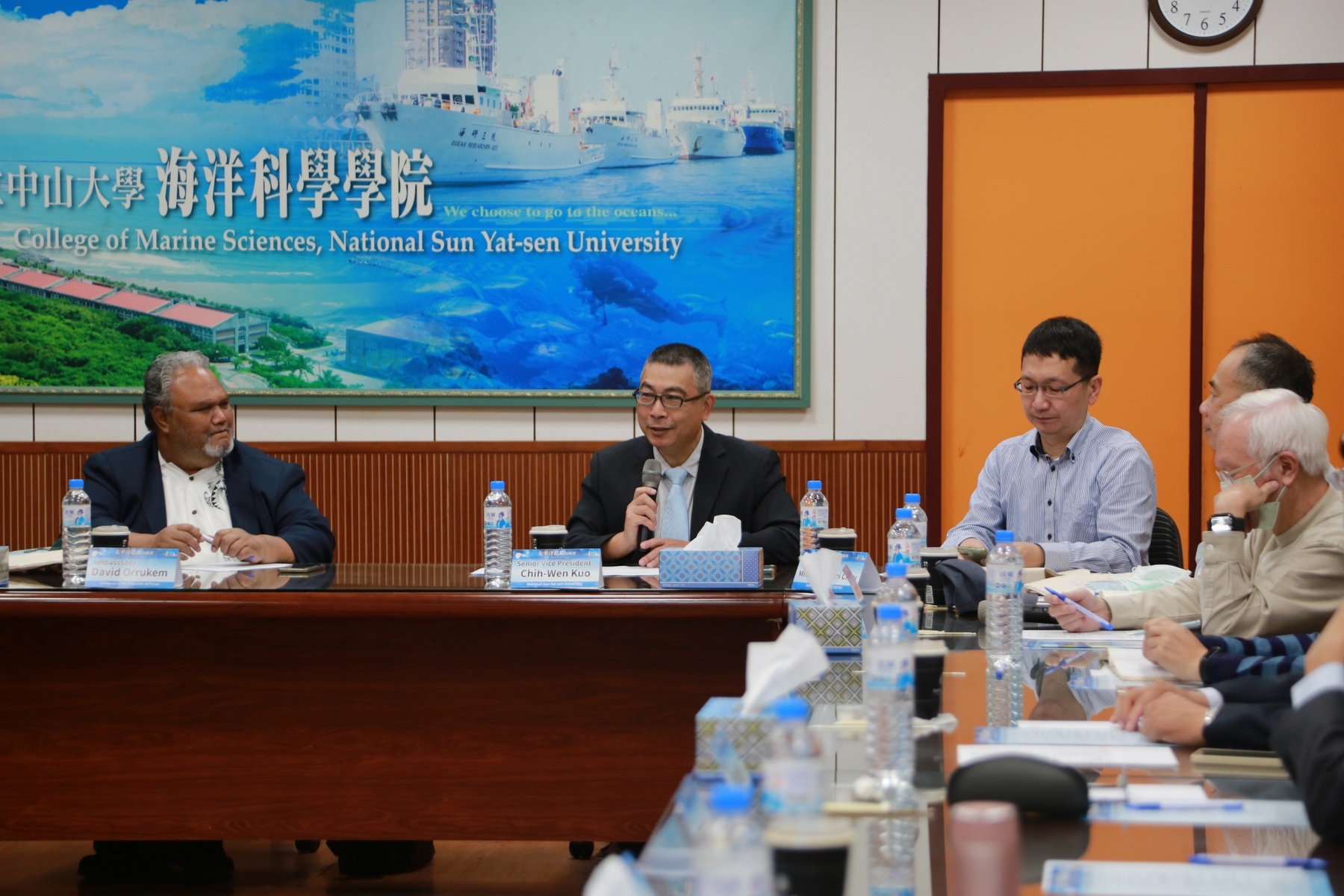
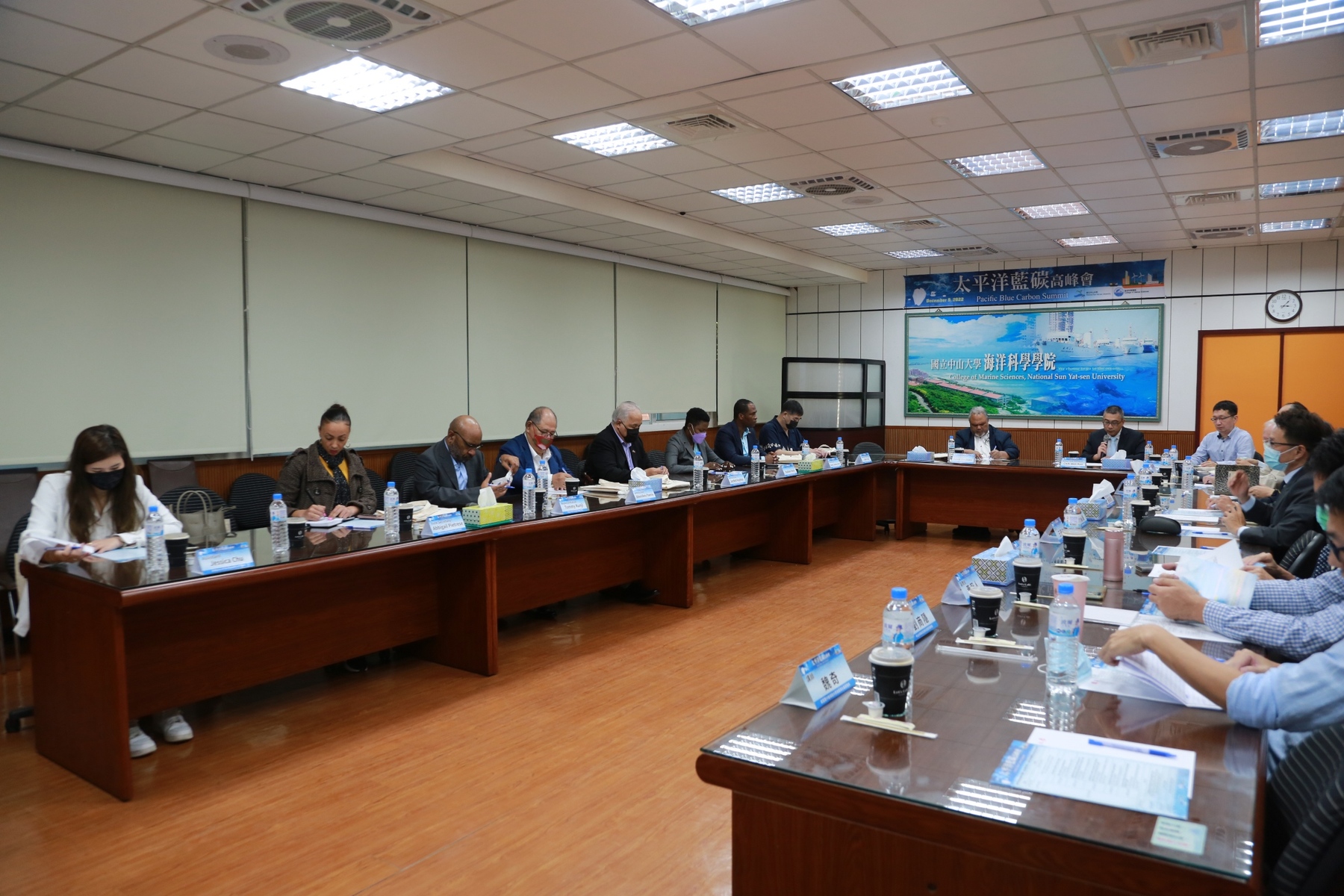
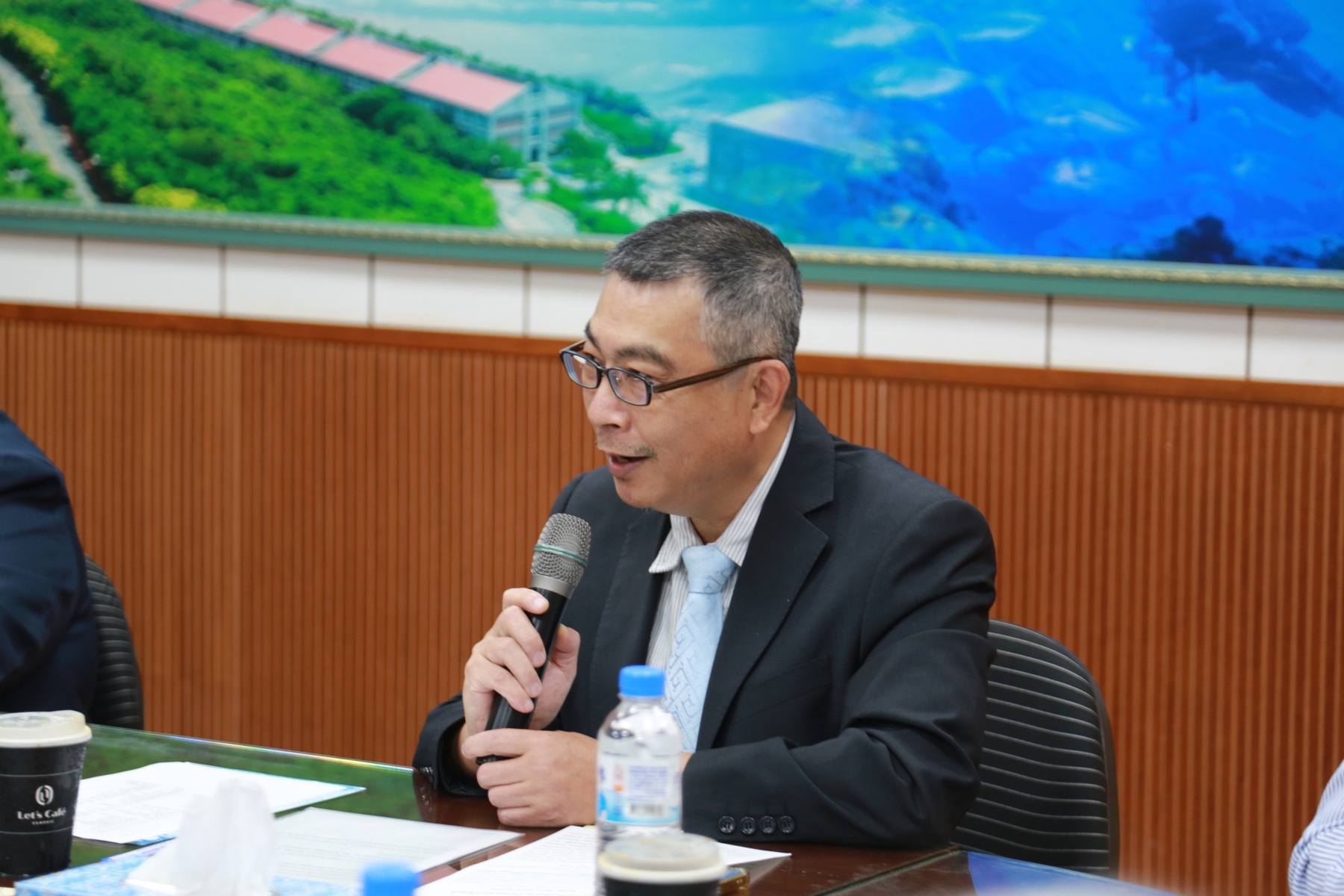
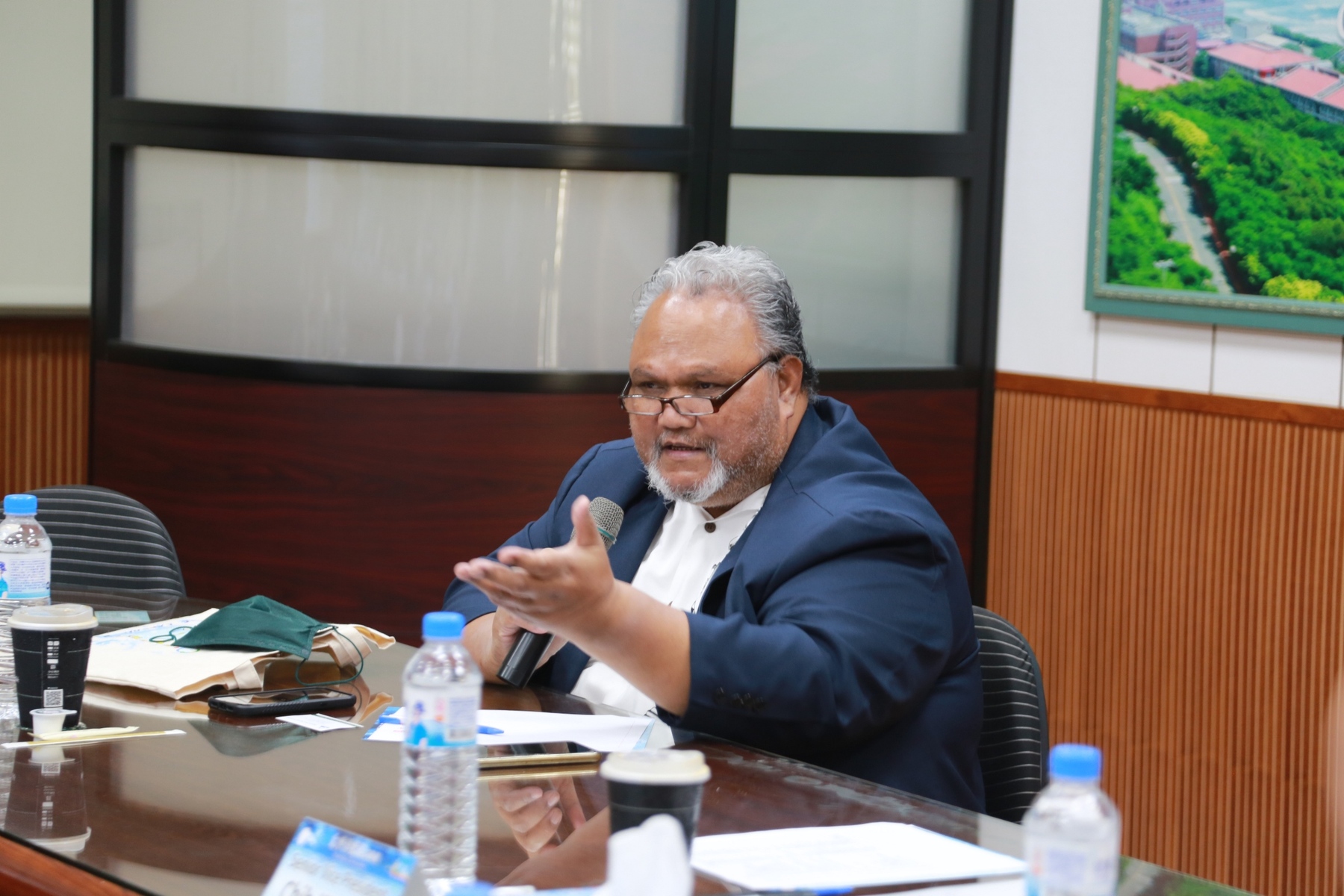
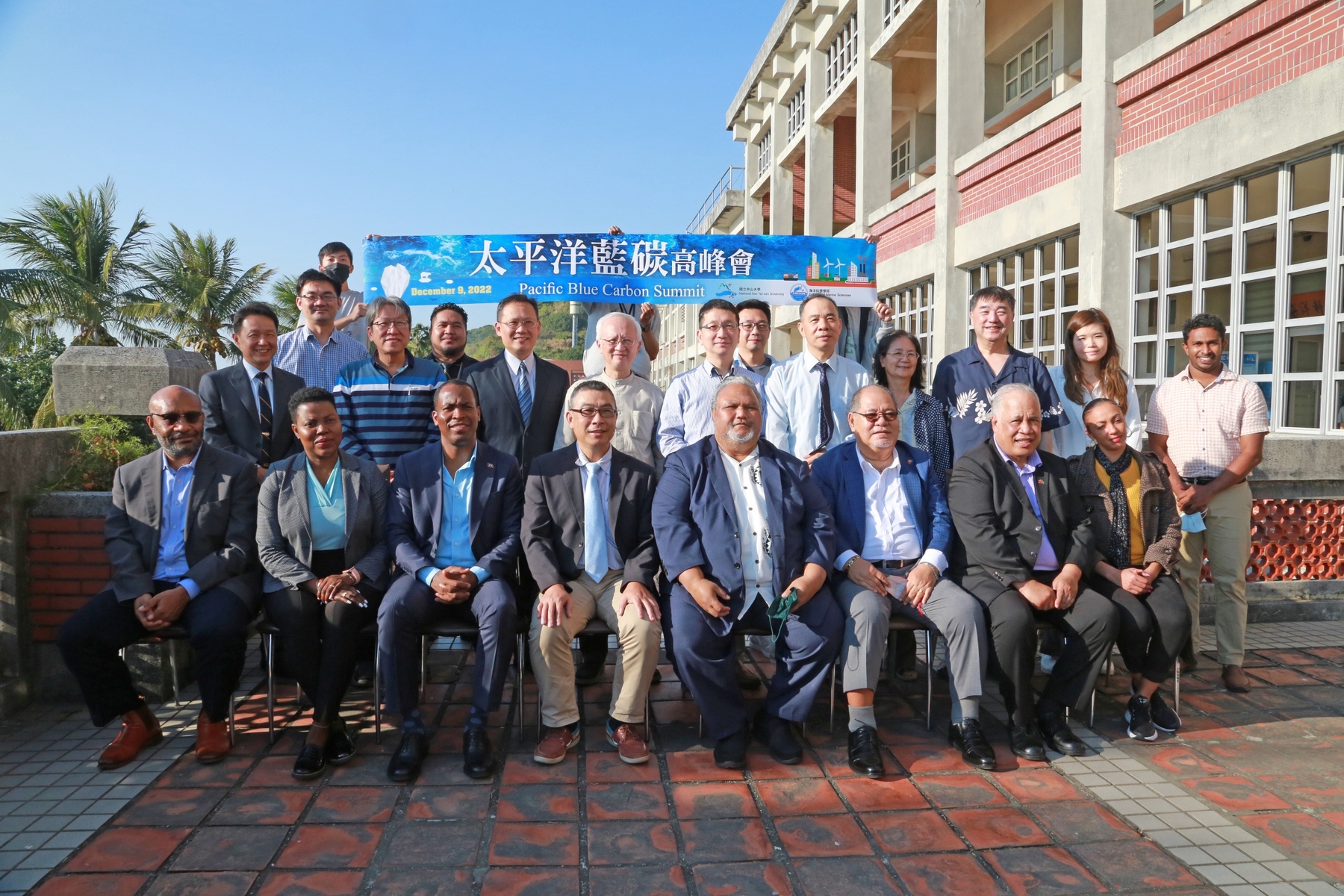
2023-02-06
National Sun Yat-sen University held the "Pacific Blue Carbon Summit" and invited the H.E. Ambassador of the Embassy of the Republic of Palau in Taiwan, David Adams Orrukem, to deliver a speech on discussions for blue carbon strategies. Scholars and experts mentioned at the meeting that deep-sea blue carbon can store carbon dioxide for hundreds of years and alleviate climate change. In the future, deep-sea carbon storage may be used as carbon credits to offset carbon emissions from marine countries, and even to trade carbon credits. It is the most important carbon sink for island countries such as Taiwan and its Pacific allies, with unlimited potential. The summit attracted ambassadors and representatives from 6 countries in Taiwan, including Palau, Haiti, Nauru, Tuvalu, Eswatini, and Papua New Guinea, to NSYSU to exchange blue carbon measurement methods and technologies.
Chih-Wen Kuo, Senior Vice President of NSYSU, pointed out that under the influence of global warming, rising sea levels pose a threat to the life and property of island countries, and people living in coastal zones around the world are developing contingency strategies for possible future impacts. By 2050 Net-zero carbon emissions have also become the goal for global efforts to reduce the effects of global warming. Chin-Chang Hung, Dean of the College of Marine Sciences, said that the measurements of carbon sink potential of the Exclusive Economic Zone (EEZ) of island countries and how to evaluate the blue carbon potential of each country in a scientific way when developing carbon credits in the future, and how to promote the establishment of a deep-sea blue carbon trading strategy in the future are all very important topics. Although deep-sea blue carbon credit is still in the pricing stage, Taiwan does not have the right to enter the United Nations to discuss deep-sea blue carbon trading. However, Taiwan has many diplomatic allies with vast EEZs, and it may be possible to use their voices to promote the importance of deep-sea blue carbon trading.
The summit discussed various aspects of strategies, such as blue carbon measurement methods, technology applications, and carbon trading evaluation. Chin-Chang Hung first introduced Taiwan's carbon emissions and deep-sea blue carbon measurement methods and then estimated the current total amount of blue carbon sink in Taiwan's territorial and EEZ waters. Wei-Jen Huang, associate professor of the Department of Oceanography, shared the application of the underway partial pressure of carbon dioxide measurement on a research vessel. Sanjaya Weerakkody, a lecturer at the Department of Fisheries and Aquaculture at Ruhuna University in Sri Lanka, took Sri Lanka as a case study to introduce the contribution of the coastal ecosystem to blue carbon in the Indian Ocean. Vicente G. Abedneko, a representative of Palau, used NSYSU’s measurement data of deep-sea blue carbon sinks in the western Pacific Ocean, roughly estimated the potential blue carbon flux in Pacific countries EEZs, and conducted carbon trading assessments. Shang-Yin Vanson Liu, an associate professor in the Department of Marine Biotechnology and Resources, started from Taiwan's seagrass restoration and talked about current trends and future prospective goals. Finally, Wei-Jen Huang, who is also the general director of New Ocean Researcher 3 (NOR3), together with three technicians, Li-Nan Weng, Huan-Jie Shao, and Bing-Rong Jiang from the NOR3 Marine Instrument center, jointly introduced how to arrange the arrays of sediment traps on the research vessel and operate the accessories and instruments to measure deep sea blue carbon sink.
After the intensive blue carbon strategy discussion at the summit, ambassadors, representatives, and participants from various countries have understood the importance of carbon sinks in the EEZ of island countries, which will not only make island countries become suppliers of global blue carbon development, the income from blue carbon trading can also be used in various aspects of economics and engineering to prevent and control sea level rise. This cross-border exchange and visit also led to Chin-Chang Hung, Dean of NSYSU College of Marine Sciences, Ray B. Dawn, Dean of NSYSU School of Banking and Finance, and Yung-Yen Shih, Chair of the Department of Applied Science of the R.O.C. Naval Academy, to visit Palau in this year to conduct on-site surveys and exchanges to seek the possibility of future cooperation.
The summit brought together ambassadors and representatives from six countries in Taiwan, including H.E. Ambassador David Adams Orrukem of the Embassy of the Republic of Palau, Goodwill Ambassador Chia-Ju Tsai of the Embassy of the Republic of Palau, H.E. Ambassador Roudy Stanley Penn of the Embassy of the Republic of Haiti, H.E. Ambassador Jarden Kephas of the Embassy of the Republic of Nauru, H.E. Ambassador Bikenibeu Paeniu of the Embassy of Tuvalu, and Representative Mr. Tommy Kambu Kunji of the Papua New Guinea Trade Office in Taiwan and the Secretary of the Embassy of the Kingdom of Eswatini came to join in the event.
[Appendix]
The ocean, land (including forests), and atmosphere are the three main active carbon pools in the Earth system, accounting for 93%, 5%, and 2% of the carbon storage respectively. The "green carbon" that absorbs carbon dioxide through photosynthesis in trees is generally better known. The sea mainly absorbs carbon dioxide from the atmosphere through "biological pumps" and "physical pumps". Mangroves, seagrass, and salt flats in coastal areas can also absorb carbon dioxide, which is generally referred to as "ocean blue carbon". "Biological pump", also known as deep-sea blue carbon, mainly captures carbon dioxide through the photosynthesis of marine microalgae, which is invisible to the naked eye. Some microalgae are preyed on by zooplankton, which promotes the marine food chain and creates carbon output flux from a series of marine biological activities.
National Sun Yat-sen University held the "Pacific Blue Carbon Summit" and invited the H.E. Ambassador of the Embassy of the Republic of Palau in Taiwan, David Adams Orrukem, to deliver a speech on discussions for blue carbon strategies. Scholars and experts mentioned at the meeting that deep-sea blue carbon can store carbon dioxide for hundreds of years and alleviate climate change. In the future, deep-sea carbon storage may be used as carbon credits to offset carbon emissions from marine countries, and even to trade carbon credits. It is the most important carbon sink for island countries such as Taiwan and its Pacific allies, with unlimited potential. The summit attracted ambassadors and representatives from 6 countries in Taiwan, including Palau, Haiti, Nauru, Tuvalu, Eswatini, and Papua New Guinea, to NSYSU to exchange blue carbon measurement methods and technologies.
Chih-Wen Kuo, Senior Vice President of NSYSU, pointed out that under the influence of global warming, rising sea levels pose a threat to the life and property of island countries, and people living in coastal zones around the world are developing contingency strategies for possible future impacts. By 2050 Net-zero carbon emissions have also become the goal for global efforts to reduce the effects of global warming. Chin-Chang Hung, Dean of the College of Marine Sciences, said that the measurements of carbon sink potential of the Exclusive Economic Zone (EEZ) of island countries and how to evaluate the blue carbon potential of each country in a scientific way when developing carbon credits in the future, and how to promote the establishment of a deep-sea blue carbon trading strategy in the future are all very important topics. Although deep-sea blue carbon credit is still in the pricing stage, Taiwan does not have the right to enter the United Nations to discuss deep-sea blue carbon trading. However, Taiwan has many diplomatic allies with vast EEZs, and it may be possible to use their voices to promote the importance of deep-sea blue carbon trading.
The summit discussed various aspects of strategies, such as blue carbon measurement methods, technology applications, and carbon trading evaluation. Chin-Chang Hung first introduced Taiwan's carbon emissions and deep-sea blue carbon measurement methods and then estimated the current total amount of blue carbon sink in Taiwan's territorial and EEZ waters. Wei-Jen Huang, associate professor of the Department of Oceanography, shared the application of the underway partial pressure of carbon dioxide measurement on a research vessel. Sanjaya Weerakkody, a lecturer at the Department of Fisheries and Aquaculture at Ruhuna University in Sri Lanka, took Sri Lanka as a case study to introduce the contribution of the coastal ecosystem to blue carbon in the Indian Ocean. Vicente G. Abedneko, a representative of Palau, used NSYSU’s measurement data of deep-sea blue carbon sinks in the western Pacific Ocean, roughly estimated the potential blue carbon flux in Pacific countries EEZs, and conducted carbon trading assessments. Shang-Yin Vanson Liu, an associate professor in the Department of Marine Biotechnology and Resources, started from Taiwan's seagrass restoration and talked about current trends and future prospective goals. Finally, Wei-Jen Huang, who is also the general director of New Ocean Researcher 3 (NOR3), together with three technicians, Li-Nan Weng, Huan-Jie Shao, and Bing-Rong Jiang from the NOR3 Marine Instrument center, jointly introduced how to arrange the arrays of sediment traps on the research vessel and operate the accessories and instruments to measure deep sea blue carbon sink.
After the intensive blue carbon strategy discussion at the summit, ambassadors, representatives, and participants from various countries have understood the importance of carbon sinks in the EEZ of island countries, which will not only make island countries become suppliers of global blue carbon development, the income from blue carbon trading can also be used in various aspects of economics and engineering to prevent and control sea level rise. This cross-border exchange and visit also led to Chin-Chang Hung, Dean of NSYSU College of Marine Sciences, Ray B. Dawn, Dean of NSYSU School of Banking and Finance, and Yung-Yen Shih, Chair of the Department of Applied Science of the R.O.C. Naval Academy, to visit Palau in this year to conduct on-site surveys and exchanges to seek the possibility of future cooperation.
The summit brought together ambassadors and representatives from six countries in Taiwan, including H.E. Ambassador David Adams Orrukem of the Embassy of the Republic of Palau, Goodwill Ambassador Chia-Ju Tsai of the Embassy of the Republic of Palau, H.E. Ambassador Roudy Stanley Penn of the Embassy of the Republic of Haiti, H.E. Ambassador Jarden Kephas of the Embassy of the Republic of Nauru, H.E. Ambassador Bikenibeu Paeniu of the Embassy of Tuvalu, and Representative Mr. Tommy Kambu Kunji of the Papua New Guinea Trade Office in Taiwan and the Secretary of the Embassy of the Kingdom of Eswatini came to join in the event.
[Appendix]
The ocean, land (including forests), and atmosphere are the three main active carbon pools in the Earth system, accounting for 93%, 5%, and 2% of the carbon storage respectively. The "green carbon" that absorbs carbon dioxide through photosynthesis in trees is generally better known. The sea mainly absorbs carbon dioxide from the atmosphere through "biological pumps" and "physical pumps". Mangroves, seagrass, and salt flats in coastal areas can also absorb carbon dioxide, which is generally referred to as "ocean blue carbon". "Biological pump", also known as deep-sea blue carbon, mainly captures carbon dioxide through the photosynthesis of marine microalgae, which is invisible to the naked eye. Some microalgae are preyed on by zooplankton, which promotes the marine food chain and creates carbon output flux from a series of marine biological activities.
Click Num:
Share
